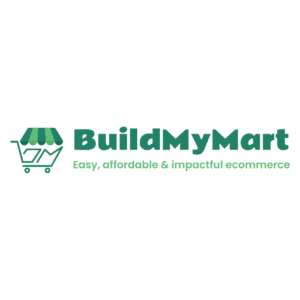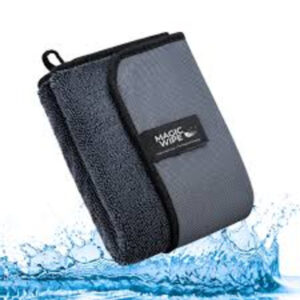Businesses today operate in an environment where customer interactions span multiple channels, devices, and digital touchpoints. As organizations strive to deliver frictionless, consistent, and personalized experiences across mobile apps, chatbots, social platforms, voice assistants, and immersive technologies like AR/VR, traditional digital architectures often fall short. This shift toward unified engagement has accelerated the adoption of composable and headless structures—an evolution strongly reflected in the growing relevance of the SPARK Matrix Digital Experience Platform evaluations that help enterprises navigate the complex vendor landscape.
Why Omnichannel Experiences Require Modern Architectural Approaches
Customer expectations are increasingly shaped by the ability to move effortlessly from one digital touchpoint to another. Whether browsing on a smartphone, interacting with a chatbot, or accessing content through an IoT device, users demand continuity. To meet these expectations, organizations require Digital Experience Platforms (DXPs) that can deliver real-time, personalized interactions with high efficiency and flexibility.
A headless CMS is central to this approach. By separating content creation from content delivery, it allows brands to manage content centrally while distributing it seamlessly across a wide range of digital channels. This decoupled structure ensures that content remains consistent and optimized regardless of the user interface or device being used.
Simultaneously, composable DXPs provide the agility and adaptability modern organizations need. Unlike monolithic systems that are difficult to scale and modify, composable architectures utilize Packaged Business Capabilities (PBCs) modular components designed to solve specific business functions. As enterprises evaluate these modular capabilities, references such as the SPARK Matrix Digital Experience Platform play a vital role in guiding decision-makers toward the most effective solutions.
Composable DXPs: Building Blocks of a Flexible Digital Ecosystem
Composable architectures empower businesses to assemble their digital experience ecosystems using modular components, enabling rapid adaptation and innovation. Key benefits include:
- Increased Flexibility
With PBCs, organizations can select and integrate only the components they need, ensuring a tailored solution aligned with strategic goals.
- Faster Deployment
Pre-built functional units enable quicker rollout of new digital features, microsites, campaigns, and personalized experiences.
- Continuous Scalability
As customer touchpoints evolve, composable DXPs scale effortlessly ensuring long-term sustainability and adaptability.
- High Customization
Modular architectures allow enterprises to create highly customized digital experiences without being restricted by traditional platform limitations.
These advantages make composable DXPs increasingly attractive, and the SPARK Matrix Digital Experience Platform assessments help organizations compare vendors on technology excellence and customer impact.
The Role of Headless CMS in Modern Experience Delivery
A headless CMS is designed to power omnichannel experiences at scale. Its core strengths include:
- Centralized content storage and creation with the ability to publish across multiple interfaces
- API-driven delivery, ensuring compatibility with mobile apps, web applications, kiosks, AR/VR devices, and more
- Rapid updates and iterations without reshaping every individual channel
- Support for modern web frameworks, including SPAs and PWAs
This architecture ensures that businesses maintain consistent, impactful messaging across all touchpoints while adapting quickly to changing consumer behaviors.
QKS Group’s Contribution to the Global DXP Market Landscape
QKS Group, formerly known as QKS Group , delivers comprehensive global market intelligence on Digital Experience Platforms. Their research provides:
- Detailed evaluations of vendor capabilities
- Analysis of product features, architecture, and differentiators
- Insights into competitive positioning
- Strategic guidance through vendor technology roadmaps
- Proprietary SPARK Matrix rankings and comparative assessments
The SPARK Matrix Digital Experience Platform analysis offers a multidimensional view of the market, helping technology buyers assess vendors on both technological strength and customer value.
In the evolving way businesses engage with customers across various touchpoints and devices, it has become crucial for creating seamless, consistent, and personalized interactions across multiple channels of engagement—such as mobile apps, chatbots, voice assistants, social media, and emerging technologies like augmented or virtual reality.
Key Vendors Shaping the DXP Ecosystem
The research covers a robust set of vendors demonstrating influence in the global DXP market. These include:
Acquia, Adobe, Amplience, Contentful, Contentstack, CoreMedia, Crownpeak, HCL Software, Ibexa, Jahia Solutions, Kentico, Liferay, Magnolia, OpenText, Optimizely, Pimcore, Progress, Salesforce, Sitecore, Squiz, and Yext.
Collectively, these vendors are enhancing their platforms with:
- Intuitive content management tools
- Capabilities for portals, microsites, SPAs, and PWAs
- Role-based access and secure single sign-on
- Intelligent search, automated workflows, and collaboration features
- Real-time analytics and omnichannel personalization
Their focus spans B2B, B2C, and B2E requirements, reflecting the expanding scope and importance of DXPs in digital transformation journeys.
Conclusion
As customer engagement becomes increasingly complex, enterprises must invest in platforms that offer flexibility, scalability, and intelligent experience orchestration. Composable and headless DXPs empower organizations to deliver meaningful, connected experiences across every channel. With evaluation frameworks like the SPARK Matrix Digital Experience Platform, businesses gain the clarity needed to choose solutions that align with their long-term digital strategy.
The headless Content Management System (CMS) enables creation and storage of content, optimized for cohesive omnichannel delivery. Composable architectures make DXPs easier to cater to wider variety of business use cases through the ability to pick and choose Packaged Business Capabilities (PBCs) with pre-built functionalities designed to address business needs, adapt to changing business requirements, and thereby allow client organizations greater flexibility, enabling the creation of modular customizable solutions.
#DigitalExperiencePlatform #ComposableDXP #HeadlessCMS #SPARKMatrix #OmnichannelExperience #DigitalTransformation




